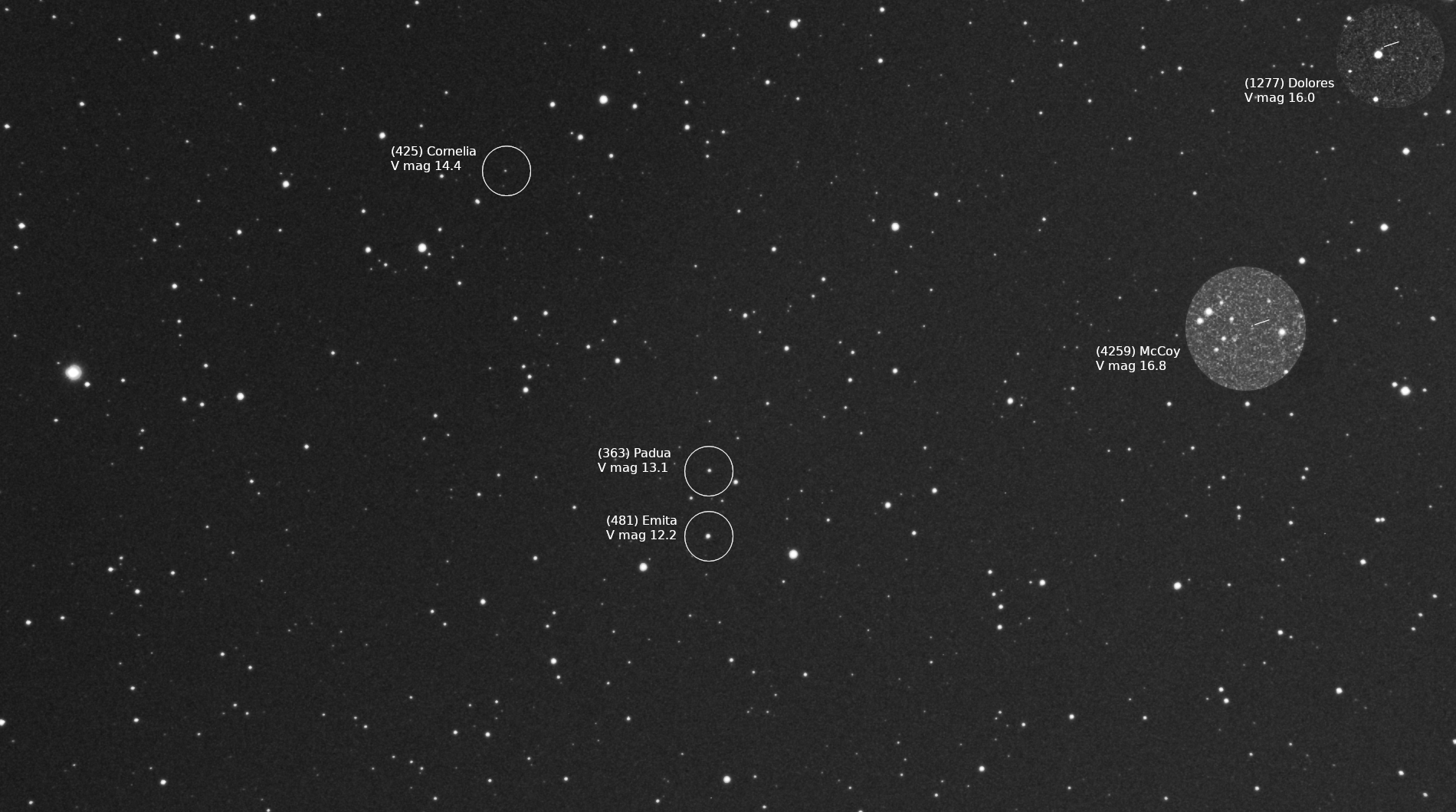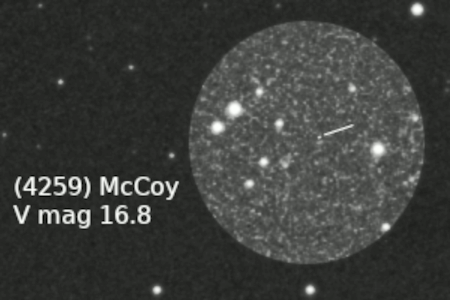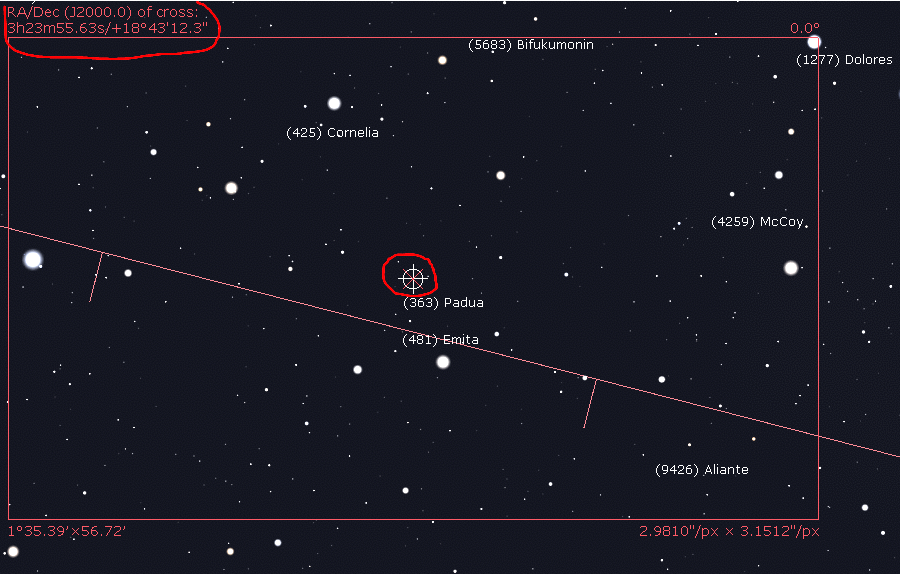I’m continuing to use my little Orion ST-80 to image main belt asteroids. And, I’m continuing to be amazed at how deep this scope can reach from my suburban-urban Bortle 7 backyard in Edmond. Here are some quick-and-dirty blink animations from last night.
I knew asteroids (1277) Dolores and (4259) McCoy were going to be in the field of view, but given their magnitudes, didn’t expect them to be visible. I was wrong. The little ST-80 picked them up at V mags 16.0 and 16.8. Surprise! If I had known they would be detected, I would have framed the image differently.
Anyhow, with these two faint objects, this turned out to be a pretty rich haul for one field. Five asteroids in total.
These images are pretty close to how they were live-stacked at the telescope. Just some curves and gaussian blur applied post. As you can tell from the bouncy stars, the two images used for this blink-animation were hand-registered.
Animation covers one-hour. Each image is a stack of 6 at 60 seconds.
I will try to update this post with more polished animations soon.

Click here for a larger image.


Scope: Orion ST-80 (80 mm f/5)
Camera: ZWO ASI482MC
Note (12-18-23): Image captions corrected to show the correct spelling for “Dolores.”


